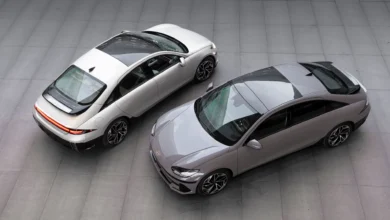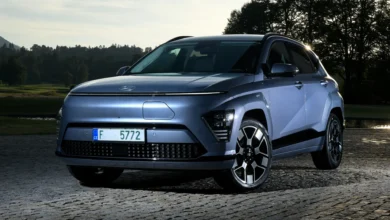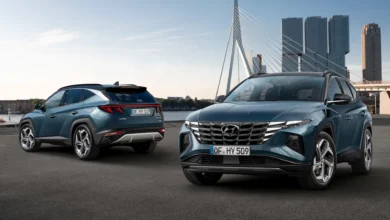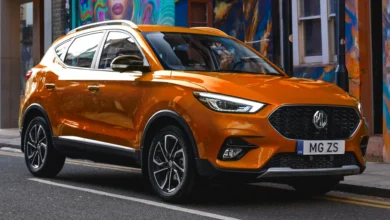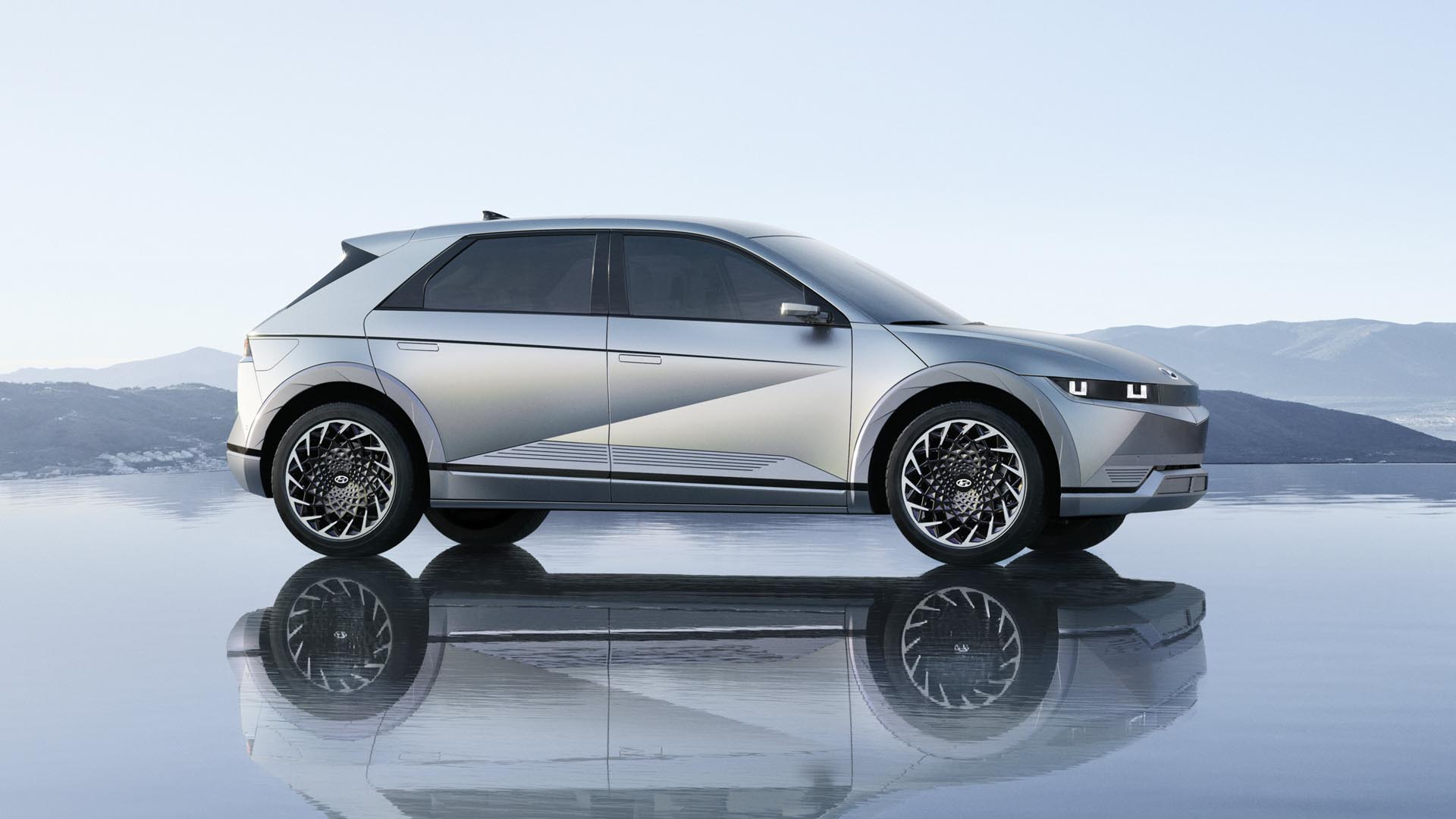
After Hyundai made the Ioniq 5 palatable with insights into design and interior, the expected premiere has now taken place. The fully electric car is the first representative of the new sub-brand and on the E-GMP platform.
That and much more is likely to be the first Hyundai on the “Electric Global Modular Platform” (E-GMP), which will come onto the market from early summer 2021 and offer an eight-year guarantee. Flush door handles on the sides, which can be automatically extended if required, ensure a clear surface design and improve aerodynamics. Lateral beads also support the characteristic look. Another highlight of this eye-catching exterior is the distinctive shape of the C-pillar, which, like the concept study 45 presented at the IAA 2019, forms a 45-degree angle.
Strong announcement: The Ioniq 5 is the first model on the new “Electric Global Modular Platform” (E-GMP).
With E-GMP, Hyundai relies on 800-volt technology for particularly fast charging processes. There is also the vehicle-to-load function, with which the driver can use the battery power inside and outside the vehicle.
With a length of 4,635 millimeters, a width of 1,890 millimeters and a height of 1,605 millimeters with a lush wheelbase of 3,000 millimeters, the space offered by the E-CUV is comparable to a vehicle from the D-segment, the one mentioned above, 4.46 Meter short Leyland Princess was also. Up to 531 liters are available in the trunk, which can be increased to almost 1,600 liters when the rear seats are completely folded down. A compartment under the bonnet (Frunk) with up to 57 liters (28 for all-wheel drive) offers additional storage space for smaller pieces of luggage, cables, or devices.
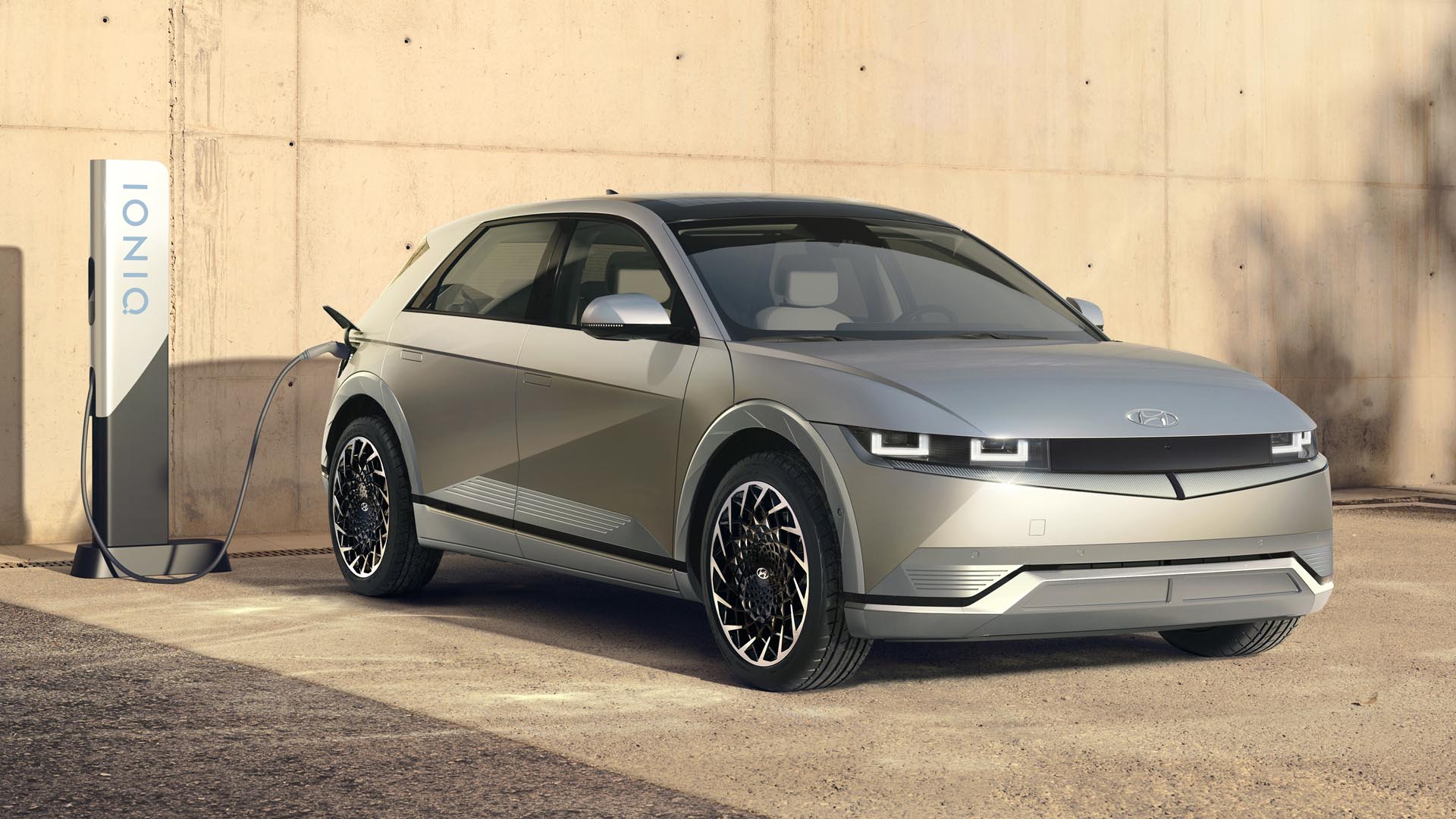
For the first time, Hyundai uses a so-called “clamshell” bonnet on the front hood. It extends over the fenders to the wheel arches and extends like a clamshell over the entire width of the vehicle. In combination with the resulting small gap dimensions, this should result in an elegant, high-quality overall picture with optimal aerodynamic properties. Offer. Such a hood (which is more expensive to manufacture) also helps with pedestrian protection. Typical of the new Hyundai: Striking daytime running lights, so-called “parametric pixels”, are integrated into the V-shaped front bumper. They are based on the smallest unit of digital imaging and give the Ioniq 5 its unmistakable light signature, which can also be found in the rear lights. With the Ioniq 5, an electric model from Hyundai is also the first to have 20-inch wheels that have been optimized in terms of their aerodynamic properties.
Customers can choose from a total of nine exterior colors, including five new colors inspired by nature, which are offered exclusively for the Ioniq 5: These include the two options with a matt finish, Gravity Gold and Shooting Star Gray, and the mineral effect paintwork Digital Teal (teal), Mystic Olive, Lucid Blue, and Phantom Black. Other available, rather lengthy exterior colors, in addition to Atlas White, are the metallic paintwork Galactic Gray and Cyber Gray. For the interior, there is a choice of black, light gray, and light gray with blue-green accents.
Hyundai Ioniq 5 Interior
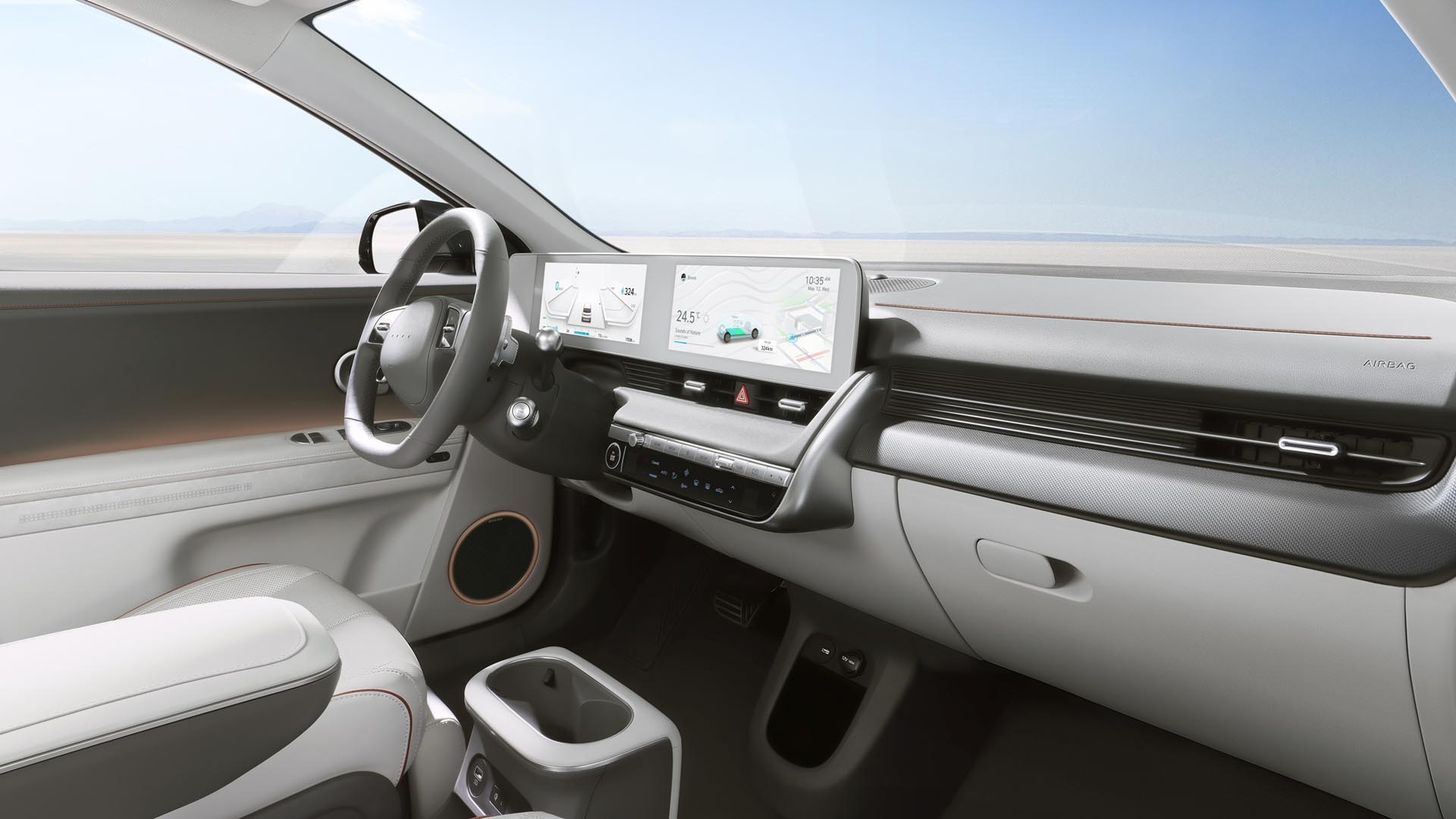
When designing the interior, it was particularly important to the Hyundai designers to give the vehicle a living space character. Its centerpiece is an innovative center console that functions as a multifunctional island. It can be pushed back by up to 140 millimeters. In combination with the flat floor, this should enable the occupants to get on and off flexibly, as well as more freedom of movement and a high level of comfort. Also, Hyundai combines very flexibly adjustable, heated front seats with fold-out leg rest and a relaxed function. The driver and front passenger can lean back at an ergonomically optimal angle, for example, to rest during a charging process. The passengers in the second row also benefit from the thin front seats, where Hyundai has reduced the volume of the backrests by 30 percent. Space gained thereby benefits the legroom of the rear passengers. The rear bench seat can be folded down and also moved electrically by up to 135 millimeters.
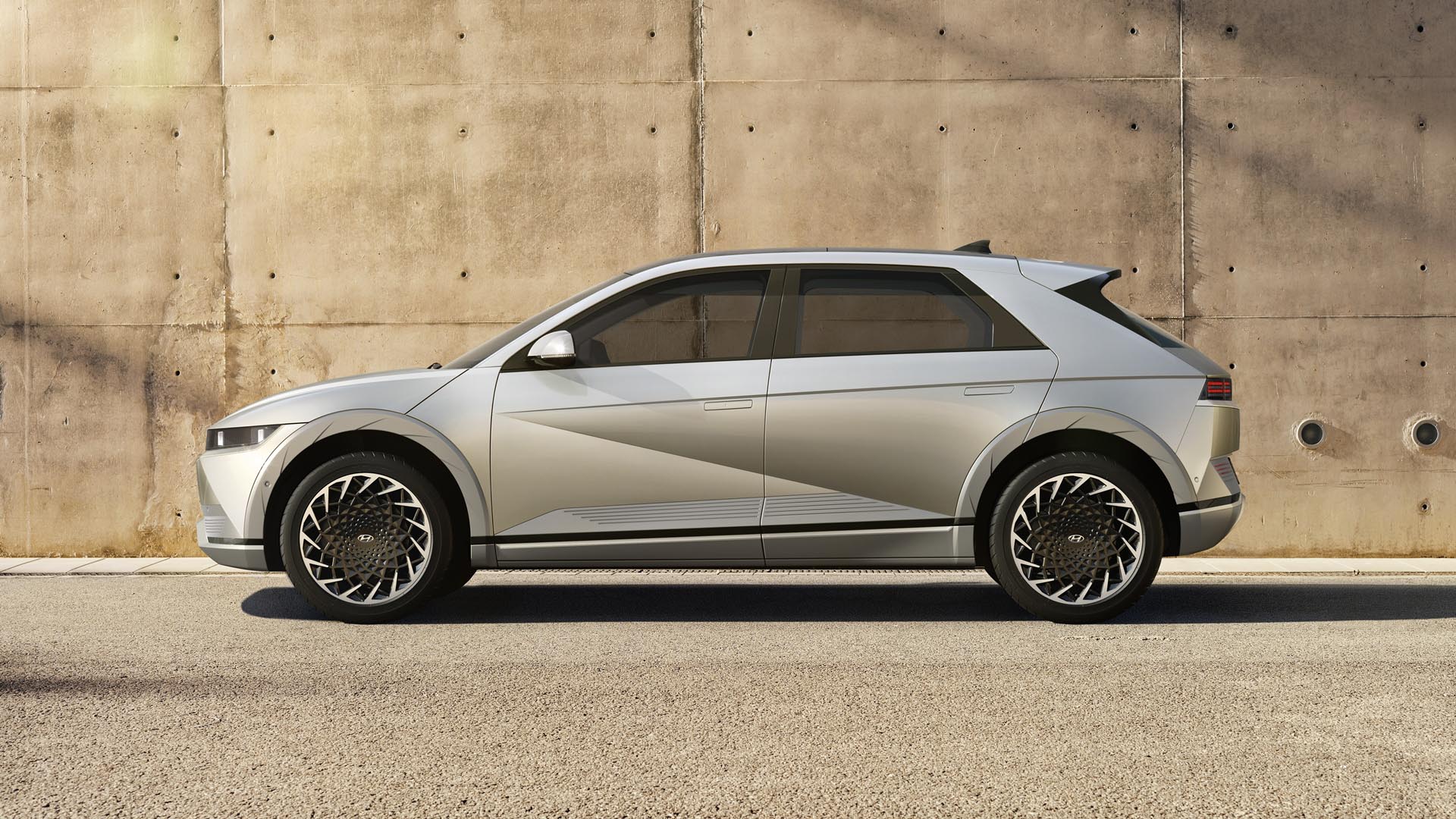
Environmentally friendly, sustainably sourced materials on the inside should consistently continue the holistic ecological guiding principle of the Ioniq 5. The seats are covered with leather that has been dyed and treated with vegetable oil extracts from linseed. Further upholstery consists of textiles made from sustainable fibers such as organic sugar cane, wool, and plant-based yarns. Hyundai also uses fabrics woven from the fibers of recycled PET plastic bottles. Surfaces such as the dashboard, the switches, the steering wheel, and the door panels are coated with polyurethane organic paint made from rapeseed and corn oil.
An optional solar roof should bring a range of up to 2,000 km a year
In addition to an optional panoramic glass roof, the Ioniq 5 can also be equipped with an environmentally friendly solar roof that absorbs energy from the solar cells. Under optimal conditions, an additional range of up to 2,000 kilometers per year should be generated.
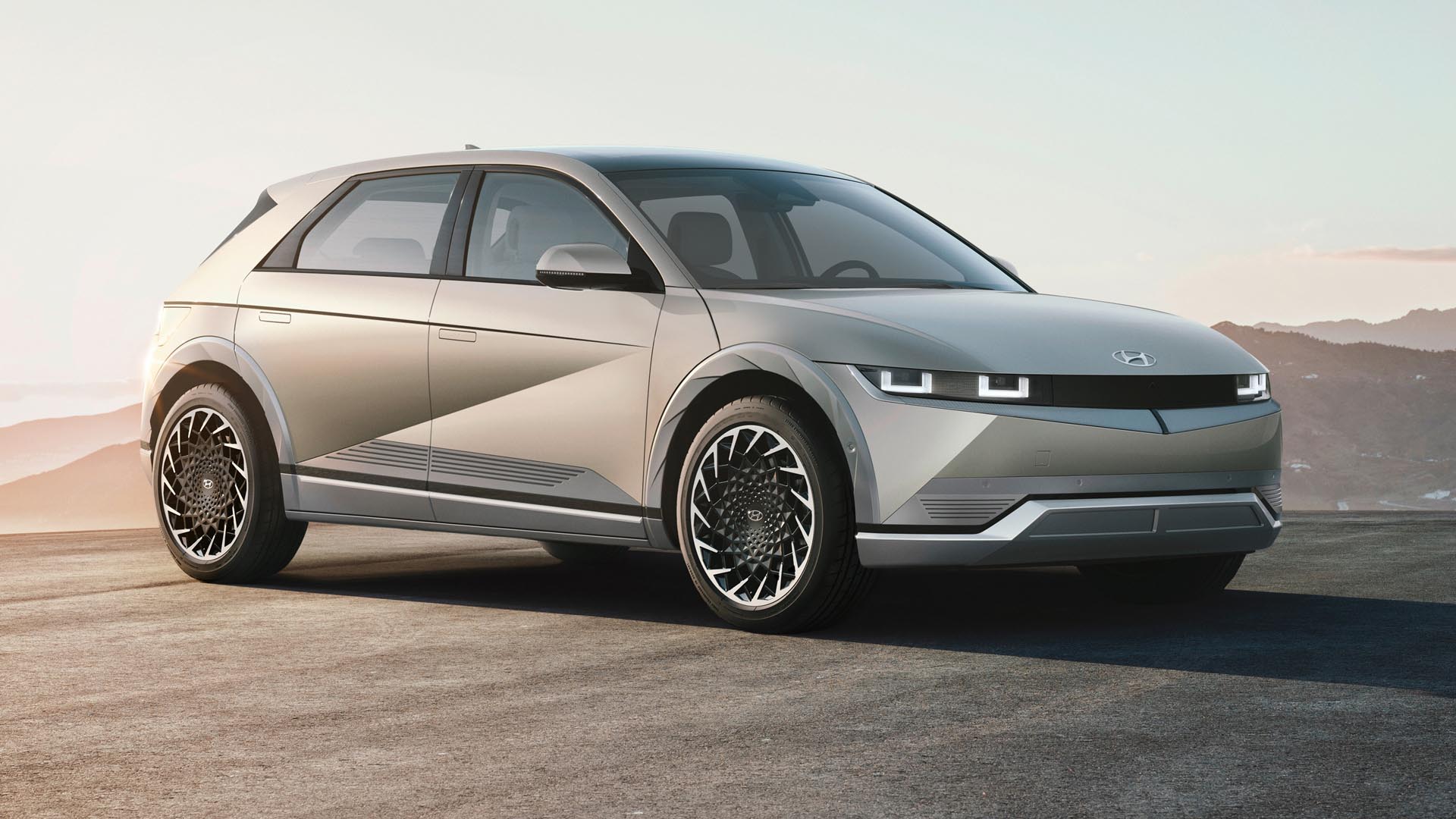
With the Ioniq 5, the customer can choose between several electric drive configurations. Thanks to the new E-GMP, up to two electric motors, rear or all-wheel drive, are available depending on the performance level. Also, the customer can choose between a 58 kWh or a more powerful 72.6 kWh battery. All variants are limited to 185 km / h. The top engine is a 155 kW rear engine and a 70 kW front engine. Both together offer 225 kW or 306 PS with dynamic all-wheel drive. Amazingly, Hyundai achieved exactly the value of many competitors here. In conjunction with the 72.6 kWh battery, this variant should achieve a range of around 480 kilometers according to the WLTP standard (provisional value) and accelerate from 0 to 100 km / h in 5.2 seconds. In combination with the 58 kWh battery, the electric motors deliver 120 kW on the rear and 53 kW on the front axle (together 235 hp). The 100 km / h mark rushes through this configuration after 6.1 seconds.
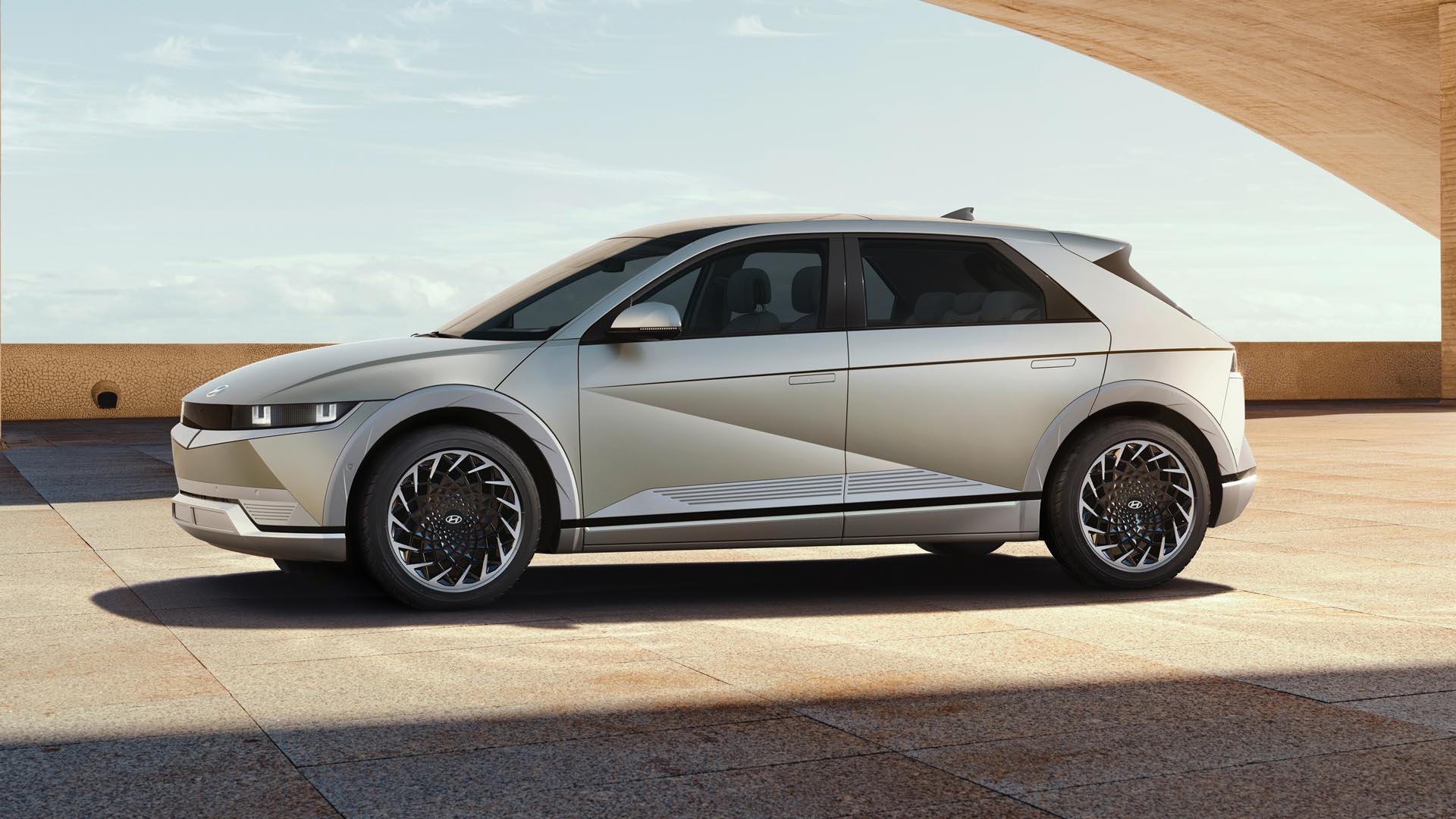
Among them are the rear-wheel-drive: with the large battery and rear-wheel drive, the electric motor has an output of 160 kW / 218 hp. In all versions of the Ioniq 5, the rear engine delivers 350 Nm, the front engine 255 Nm. In conjunction with the small battery, the electric engine has an output of 125 kW / 170 PS. The price for this entry-level variant starts at 41,900 euros (the new Hyundai Ioniq 5 is not yet for sale. The homologation and fuel consumption calculation of the German national version will take place immediately before the market launch).
Up to 1.6 tons of trailer load
For this, the customer receives, among other things, the 800-volt technology, full LED headlights, LED taillights, 19-inch alloy wheels, two 12.25-inch screens for the cockpit and the navigation system, a reversing camera, heated front seats, and extensive safety systems, including an adaptive cruise control system and intelligent traffic sign recognition as standard. The Ioniq 5 is one of the few electric cars that can tow trailers with a gross vehicle weight of up to 1,600 kilograms.
Charging: With 400 or 800 volts in two directions – including an external socket!
The Ioniq 5 charges at both 400-volt and 800-volt charging points without the need for additional components or adapters. This multi-charging system is a technology developed and patented by Hyundai for high charging compatibility.

According to Hyundai, the high-voltage battery charges from 10 to 80 percent of its capacity in just 18 minutes at a 350 kW fast-charging station. According to the Koreans, a charging time of five minutes is sufficient for a range of 100 kilometers according to the WLTP standard. Also, the customer can fall back on the bi-directional charging capability (vehicle-to-load, V2L). This allows any electrical devices such as e-bikes and e-scooters to be operated while driving or when stationary or power notebooks with up to 230-volt alternating current. The V2L function delivers an output of up to 3.6 kilowatts. To obtain electricity, the Ioniq 5 has two V2L connections: One is located under the seats in the second row, and another is located on the charging connection on the outside of the vehicle, which can be used with an adapter for 230-volt devices.
Hyundai is also big on connectivity and infotainment
The wide digital cockpit has a 12.25-inch display as standard, the displays of which the driver can adapt to his or her wishes. It is supplemented ex-works by a 12.25-inch touchscreen display for the infotainment system including Apple CarPlay and Android Auto. The Ioniq 5 is the first Hyundai vehicle to feature a head-up display (AR HUD) that has been expanded to include augmented reality functions. If desired, it transforms the windshield into an oversized screen with a diagonal of 44 inches, on which the most important driving and vehicle information is projected directly into the driver’s field of vision. A premium audio system from Bose with eight speakers, including a subwoofer, is designed to ensure a high-quality sound experience.

The Ioniq 5 is also the first Hyundai to feature the second generation motorway assistant (HDA 2). With the help of a front camera and radar sensors as well as navigation data, the system uses targeted steering and braking to keep the car in the middle of the lane and at the pre-selected distance from the vehicle in front. A new feature of the HDA 2 is the support of the driver when changing lanes. Other driver assistance systems include an autonomous emergency brake assistant, an active blind-spot assistant, intelligent traffic sign recognition, an attention assistant, and a high beam assistant.
Updates over-the-air will also be available in the future
Also, Hyundai has added Bluelink to the telematics services. In addition to the familiar functions such as starting the charging process remotely with the associated smartphone app, new services are available. These include, for example, improved voice control, connected routing, last-mile navigation, and the storage of up to three user profiles. Hyundai will soon be introducing new cloud-based vehicle services as part of the Bluelink telematics services, with which functions can be activated or retrofitted via software updates (over-the-air).
Two more Ioniq models planned by 2024
With the sub-brand Ioniq, which combines the two terms “IonN” and “Unique”, Hyundai wants to expand its range of models in the field of alternative drives. Further vehicles are planned for this: In addition to the Ioniq 5, the Ioniq 6 sports sedan and the large electric SUV Ioniq 7 are to expand the range, which will also attack the premium brands.
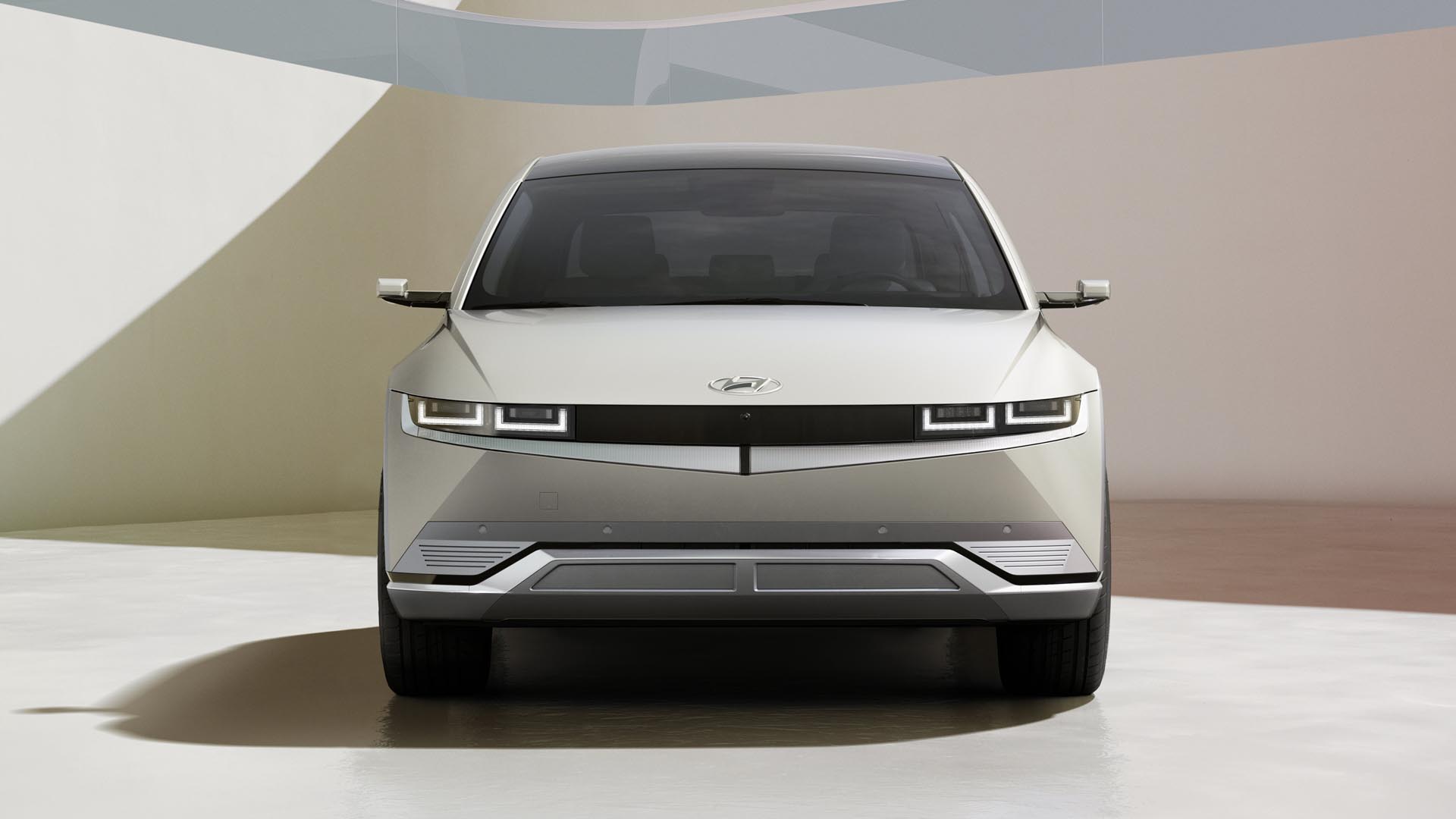
For those who decide quickly, Hyundai is now offering the opportunity to reserve an Ioniq 5, limited to 3,000 worldwide, with the exclusive “Project 45 Package” on the website. The exclusive special model costs 59,550 euros gross (that’s almost 50,050 euros net), and the price includes a customer benefit of around 5,000 euros, depending on the additional options selected. The limited package version Project 45 includes, among other things, the large 72.6 kWh battery, all-wheel drive, front seats with relax function, an electrically sliding rear bench seat, a solar roof, and 20-inch alloy wheels. The IONIQ 5 with Project 45 package are delivered with priority and are therefore the first vehicles in the customer’s hands at the market launch. In addition to the price advantage, those who pre-order the limited E-CUV benefit from other exclusive benefits such as product videos, pictures, and news updates. Even more exciting, especially for long-haul customers: Early orders for the Project 45 package automatically receive two years of access to Ionity’s fast-charging network without a basic fee.
What does that mean?
Hyundai is back: Electric in the (upper) middle class, where the new Ioniq is not only a strong alternative to the Ford Mustang Mach-E, Nissan Ariya, VW ID.4 or Tesla Model 3 but also an interesting counterpart for the Audi A4, BMW Dreier or i4 or Daimler’s C-Class.

